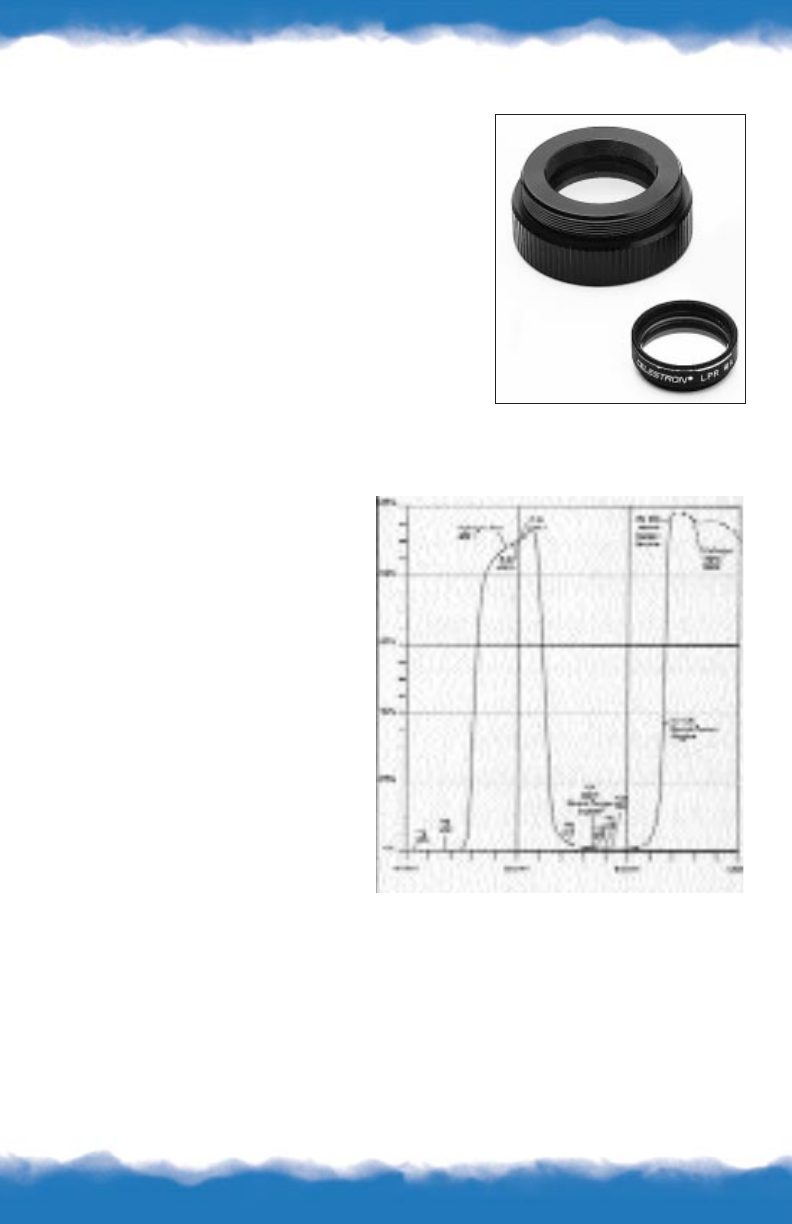
19
LPR Filters
Light Pollution Reduction (LPR) Filters are
designed to selectively reduce the transmission
of certain wavelengths of light, specifically
those produced by artificial light. This
includes mercury, and both high and low
pressure sodium vapor lights. In addition, they
block unwanted natural light caused by
neutral oxygen emission in our atmosphere
(i.e. sky glow). As a result, Celestron LPR
Filters darken the background sky, making
deep-sky observation and photography of
nebulae, star clusters and galaxies possible
from urban areas. LPR Filters are not used for
lunar, planetary or terrestrial photography.
While blocking unwanted light, Celestron LPR Filters permit the transmis-
sion of more desirable wave-
lengths. The wavelengths
included are hydrogen alpha,
hydrogen beta, doubly ionized
oxygen and singly ionized
nitrogen. This will improve your
viewing of emission nebulae,
both from urban and rural
settings. Some examples of
objects that will show improved
contrast are: the Orion Nebula,
the Rosette Nebula, the North
American Nebula, the Veil
Nebula and the Helix Nebula.
The latest generation of
Celestron LPR Filters is made of
high quality, flat, polished
optical glass. These units are not
laminated! With over 40 layers
of coating, these filters are state-
of-the-art. They’re also protected with a broadband anti-reflection coating to
prevent ghosting and to improve contrast. They provide superior perfor-
mance and contrast over competitive models.
LPR Filter – for 1
1
/
4
" eyepieces [#94126A]
LPR Filter – for rear cell of Celestron’s C5, C8 or C9
1
/
4
[#94127A]
(Fits on the reducer plate of C11 and C14 telescopes.)
#94127A
#94126A


















